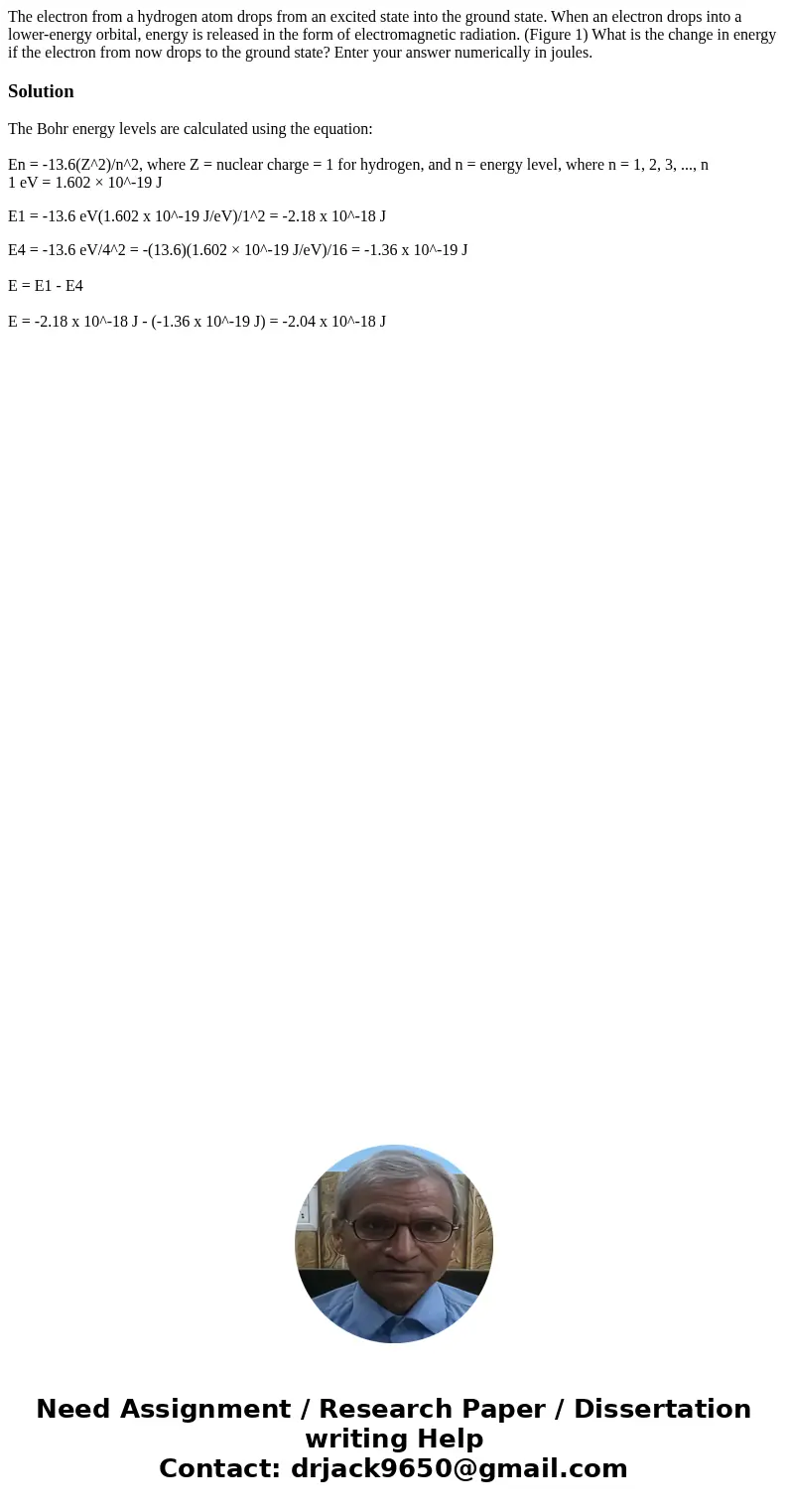The electron from a hydrogen atom drops from an excited stat
The electron from a hydrogen atom drops from an excited state into the ground state. When an electron drops into a lower-energy orbital, energy is released in the form of electromagnetic radiation. (Figure 1) What is the change in energy if the electron from now drops to the ground state? Enter your answer numerically in joules. 
Solution
The Bohr energy levels are calculated using the equation:
En = -13.6(Z^2)/n^2, where Z = nuclear charge = 1 for hydrogen, and n = energy level, where n = 1, 2, 3, ..., n
1 eV = 1.602 × 10^-19 J
E1 = -13.6 eV(1.602 x 10^-19 J/eV)/1^2 = -2.18 x 10^-18 J
E4 = -13.6 eV/4^2 = -(13.6)(1.602 × 10^-19 J/eV)/16 = -1.36 x 10^-19 J
E = E1 - E4
E = -2.18 x 10^-18 J - (-1.36 x 10^-19 J) = -2.04 x 10^-18 J

 Homework Sourse
Homework Sourse